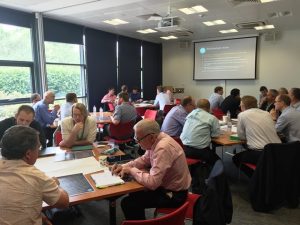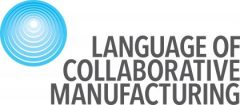The 2015 Industry workshop an industry day was held on the 3rd July 2015 at the National Composites Centre in Bristol. The objective was to gather views on progress to date, to help us to shape the outputs to meet the challenges faced in managing engineering projects.

Presentations
Programme overview and objectives – Prof. Ben Hicks, Principal Investigator
Automatic analysis of CAD files – Dr James Gopsill
Analysing engineering communications – Dr Simon Jones
Analysing workflow and reports – Dr Lei Shi
Features of interest – What can we tell from the automatic analysis of digital assets? – Dr Chris Snider
Workshop Summary
In the afternoon, attendees formed five groups to tackle four questions. Below is a brief summary of the outputs for each question, together with specific follow-ups we will undertake:
1. Which scenarios are most relevant to your organisation/experiences?
Each group tackled this question in a slightly different way, but there were five readily identifiable clusters:
- Requirements definition, conformance and change – covering aspects such as scope-creep and compliance with requirements.
- Design change, dependency and maturity – covering topics such as detection of design changes and effects, uncovering hidden dependencies, and systems integration issues.
- Cost & time – Perhaps unsurprisingly, in many cases the success of projects is judged on cost and time conformance.
- Utilisation of resources – This cluster covered issues such as level of utilisation of human resources, assessing knowledge and skills, workload and motivation.
- Management of assets – Distinct from human resources, there was a recognition that physical assets were important, particularly with respect to their utilisation and criticality to a project.
Outcome/Next Steps: We will focus efforts on analytical techniques that deliver insights into these type of scenarios. We will use the five clusters as a framework to communicate future results.
2. Based on the work presented, what is of most interest to you/your organisation?
A broad range of answers were given, reflecting the above clusters – for example, monitoring CAD files (linked to design change, dependency and maturity), but there was also interest in using a combination of things to support project review/’replay’.
3. How might the principles of engineering project health monitoring be used in your organisation?
Following the theme of project review or ‘replay’, several groups mentioned using the techniques for lessons learned/project reviews, project ‘health checks’, as a tool to drive continuous improvement and to analyse variance from a plan. Integration with existing tools, such as Excel or Primavera, was the second strong theme.
Outcome/Next Steps: We will actively look at integration with existing toolsets. We will also consider different ‘modes of use’ for project dashboards for:
- Overview
- Monitoring variance
- Root cause/troubleshooting
- Lookback/learning journeys
4. What form of tool or dashboard would be most relevant/useful to you/your organisation?
In terms of dashboard design, it was apparent that dashboard design probably needed to be specific to the ‘mode of use’ which it was intended to support – that is, the requirements for an ‘overview’ dashboard (e.g. using traffic lights) were probably quite different to one to support sense-making. The requirement for drill-down was also expressed by several groups.
Outcome/Next Steps: In addition to designing dashboards specific for different modes of use (see above) we will ensure dashboards follow good User Interface and User Experience practice. We will continue to use common metaphors (e.g. traffic lights) where appropriate and ensure the dashboards are evaluated with respect to their intended mode of use.
